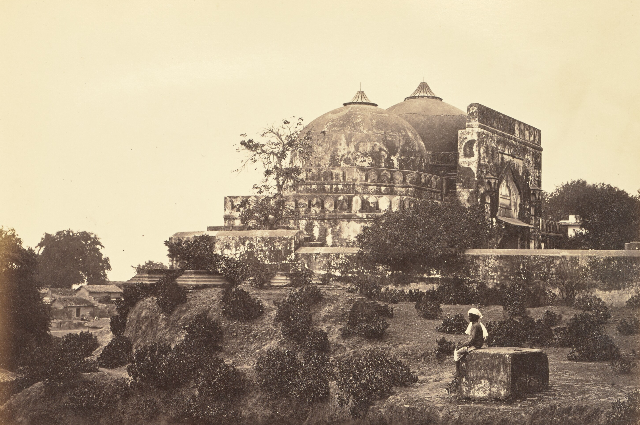A distinguishing element that has been firmly embedded in the history of the country is the Babri-Ayodhya controversy, which is a mosaic of India's vast culture and religious variety. In an attempt to rewrite the story around the symbolic figure of Lord Ram and the disputed location where the Babri Masjid once stood, the Rashtriya Swayamsevak Sangh (RSS) and the Vishwa Hindu Parishad (VHP) formed the Ayodhya movement in the 1980s. But the movement's effects go well beyond the actual destruction of a mosque; they are felt across India's secular values, the legal system, and the very corridors of power.
India's secular fabric has been permanently impacted by the Babri-Ayodhya conflict, which took place against the backdrop of the Ayodhya movement started by the Rashtriya Swayamsevak Sangh (RSS) in the 1980s. The movement, which was strategically allied with the Vishwa Hindu Parishad (VHP), aimed at setting up a temple at Lord Ram's claimed birthplace in Ayodhya, where the Babri Masjid stood, and unite the majority community behind the image of Lord Ram. The mosque's 1992 demolition served as a wake-up call to the Sangh Parivar's anti-secular agenda.
Representing India's rich cultural and religious past, the Babri Masjid turned into a hotbed of religious conflict. The Sangh Parivar intended to convert India into a Hindu Rashtra, get rid of any alleged foreign influences, and diminish Islam in public life. This goal was reflected in its demolition. The movement's controversial character was highlighted by the following attempts to convert Muslims to Hinduism and prohibit diverse faiths unions. Widespread intercommunal violence followed the destruction of the Babri Masjid, especially in northern India. The country's socio-political fabric was severely stressed, and thousands of people lost their lives. Significant societal effects of the incident were the formation of the Bharatiya Janata Party (BJP) and its subsequent dominance in Indian politics. Religious minorities felt even more insecure as a result of the aftermath, which further widened the gap between their groups. The vision of an inclusive and diverse India was put to the test by the continuing marks of violence and distrust. There is no denying that the destruction of the Babri Masjid damaged the secular values embedded in the Indian Constitution. The incident made India's secular basis shaky and made clear the need for a more complex and inclusive strategy toward religious diversity. During the Ram Janmabhoomi movement, religion and politics were mixed, weakening the secular structure that had long served as the foundation of the Indian state.
Future prospects:
In light of the historical events surrounding the Babri-Ayodhya conflict, the future of the Babri community is defined by displacement, socioeconomic difficulties, and the requirement for acknowledgment and peace. Since they have been uprooted from their homes, the community needs extensive restoration. Their problems are made worse by socioeconomic disadvantage, which makes initiatives for equitable chances and development essential. The delayed legal processes demand an agreement to justice, legal recognition, and possible compensation. To build a future in which the Babri community can overcome historical injustices and contribute to a more united and harmonious India, inclusive social policies, communal harmony efforts, and educational initiatives have to be key elements. The aftermath exposed the fragility of India's secular foundation, calling into question the Constitution's diverse and broad vision. The collision of religion and politics weakened the secular fabric that had long defined the Indian state. To overcome historical injustices and contribute to a more harmonious India, the Babri community, which has been marked by displacement and socioeconomic challenges, requires comprehensive recovery, empowerment initiatives, and justice. The government's role, as well as the actions of those involved in the dispute, must be scrutinized. The strategic alliance's quest for a Hindu Rashtra, as well as following violence, indicates an indifference to India's secular ideals. The prolonged legal processes highlight the importance of a commitment to justice, legal recognition, and potential compensation.
Conclusion
Pursuing justice in the Ayodhya conflict is critical to creating unity and safeguarding the values of a secular India. It is critical that the Babri community, regardless of their faith, be treated fairly and with respect, in accordance with constitutional norms that promote the rights and dignity of all citizens. Valuing Muslims within the community within the boundaries of the constitution is not just a legal need, but also an ethical duty to diversity and equality. Moving forward, it is critical to protect the Babri community's future and cultural identity, ensuring that India's secular fabric remains soaring and fragile, embracing the rich variety that defines the nation. This strategy not only helps to create a more just society.

